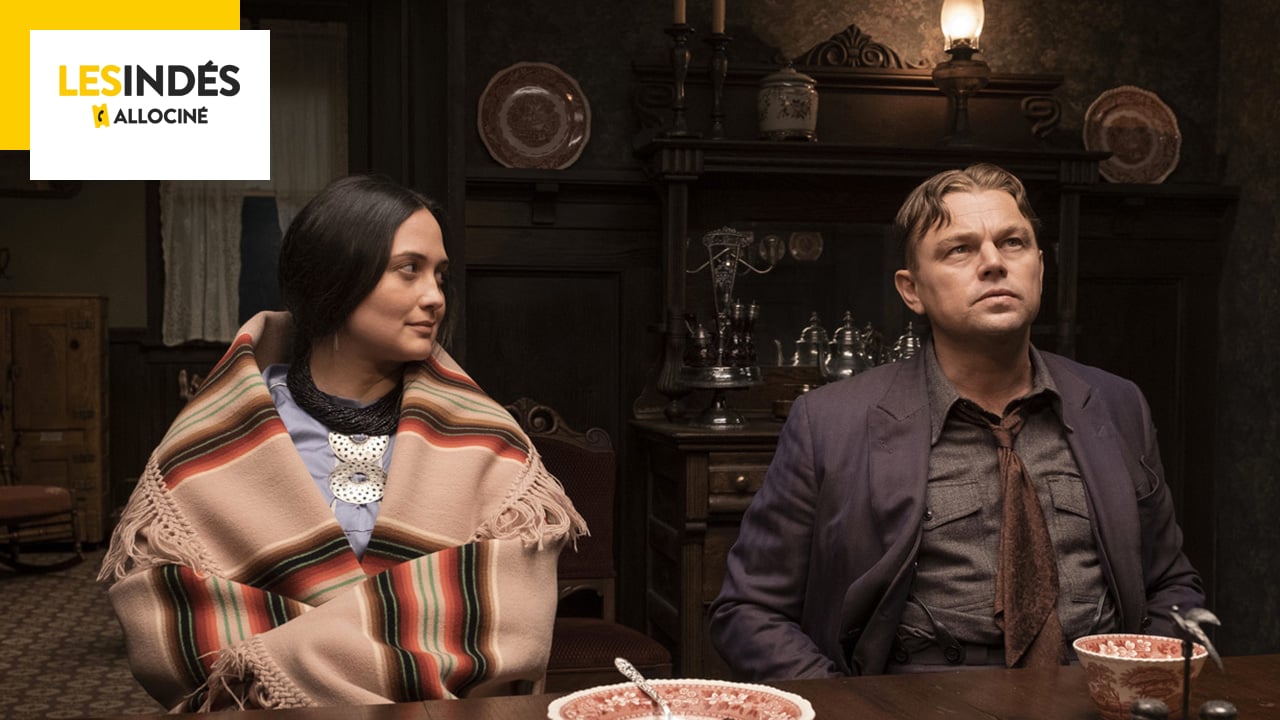Killers of the Flower Moon is based on a terrible and sordid true story that traumatized America in the 1920s. Explanations.
Highly anticipated by the public, Killers of the Flower Moon was finally released in cinemas on October 18. This ambitious 3h26 historical fresco brings together Leonardo DiCaprio and Robert De Niro in front of Martin Scorsese’s camera!
Releases, news, interviews… Find all the latest news on Indie films
After The Irishman, which was based on the true story of gangster Frank Sheeran and trade unionist Jimmy Hoffa, did the New York filmmaker also draw his inspiration from reality for his new film?
A TRUE STORY UNFAIRLY FORGOTTEN
Martin Scorsese and his co-writer, Eric Roth, adapted David Grann’s mystery book, Killers of the Flower Moon (The American Note in French), published in 2017. A renowned writer and investigative journalist, the author sheds light on forgotten stories with great acuity and a keen eye, based on in-depth and very in-depth research.
At the heart of the writer’s book is the Osage Nation, a Native American people who had to leave their original lands located in the Ohio and Mississippi valleys. They then migrated to the states of Kansas and Missouri until finally settling on so-called Indian land even further west, in Oklahoma.
As Emmanuel Tellier explains in Marianne’s columns, the Osages, already forcibly displaced between 1818 and 1825, saw their population decrease by half during the first very long stage of their exodus towards Kansas. For the author, it is a “almost ‘ordinary’ tragedy, in this century without pity for the losers of the conquest of the West: epidemics, malnutrition, sometimes even famines.”
After this forced migration, the Washington administration again asked the Osage people to go into exile to “to settle this time on the plains located north of the small town of Tulsa, Oklahoma.” There were then only 3,000 Osages left in the tribe. They decided to accept the government’s request, not without setting a non-negotiable condition: becoming the inalienable owners of these lands.
The Osage Nation had to pay “a sum certainly large for the time – 300,000 dollars, the equivalent of 7 million dollars in 2023 – but which would guarantee them never to be displaced again. The agreement was signed in 1872 (then supplemented in 1906) and the Osages became owners of 6,000 km2 of land. Life on this inhospitable plateau would not be easy, but here, at least, no one would come to dislodge them again.”
From the end of the 19th century, this is where most of the Osages lived. In 1894, after the discovery of oil on their territory, the Osages became extraordinarily rich because they retained their rights to the land and leased the deposits to developers.
“Who, before 1894 and the first discoveries in this region of the providential viscous liquid, could have imagined that this thankless corner of northern Oklahoma had the richest subsoil in oil in all of North America? Jackpot for the losers of the 19th century”explains Emmanuel Tellier.
Paramount Pictures
In the space of 20 years, the Osage tribe, arriving in Oklahoma in total destitution, became the richest population per capita on the entire planet. “Each Osage family being the owner of its plot, it was enough to negotiate a contract with an extraction company to receive generous exploitation rights as well as a significant share of the income from this exploitation. Extraordinary reversal of History! “
Greedy speculators then rushed to the region. The latter seek to take advantage of the Osages in the “mushroom towns” which are springing up everywhere (where criminal activity is flourishing…) and with the explicit authorization of the American government of the time. A corrupt and racist system is then put in place.
In 1921, “the Osage tribe has become accustomed to receiving between 20 and 22 million dollars annually in exploitation rights and commissions on the oil extracted, the equivalent of 300 million dollars today – a windfall shared by less than 10 000 Indian souls. ‘See and contemplate’, wrote a special correspondent from the New York newspaper Outlook, ‘the Indians, instead of dying of hunger, enjoy regular incomes which make the bankers sick with jealousy'”underlines Emmanuel Tellier in Marianne.
MILLIONS OF DOLLARS AT Stake
Native American fortunes are also managed by white guardians who reap millions of dollars in profits. Inevitably, money rhymed with horror in the 1920s. Dozens of Osage were murdered during what was called the “Reign of Terror.” The latter are killed in mysterious circumstances. Note that some were poisoned over long periods of time.
The goal ? That the very lucrative “headrights” (these rights paid to Native Americans for the use of their land) can be inherited by profiteers who entered into Native American families through marriages of interest.

Paramount Pictures
Beginning in 1925, the FBI launched an investigation at the request of the Osage people. This is one of the first criminal cases handled by the “Bureau”. But unfortunately the damage has already been done. This sordid story will finally fall into oblivion before resurfacing a century later, brought to light by Martin Scorsese in Killers of the Flower Moon.
Furthermore, Martin Scorsese wanted to create his cast in the heart of the Indian reservation, in Oklahoma. For the main female role, he notably called on the actress from the Blackfeet tribe, Lily Gladstone.
Alongside Leonardo DiCaprio and Robert De Niro, much of the cast is Native American. About 40 people from the Osage reservation were selected in the casting process. Some of them play the role of their grandfather or great-grandfather in the film.
